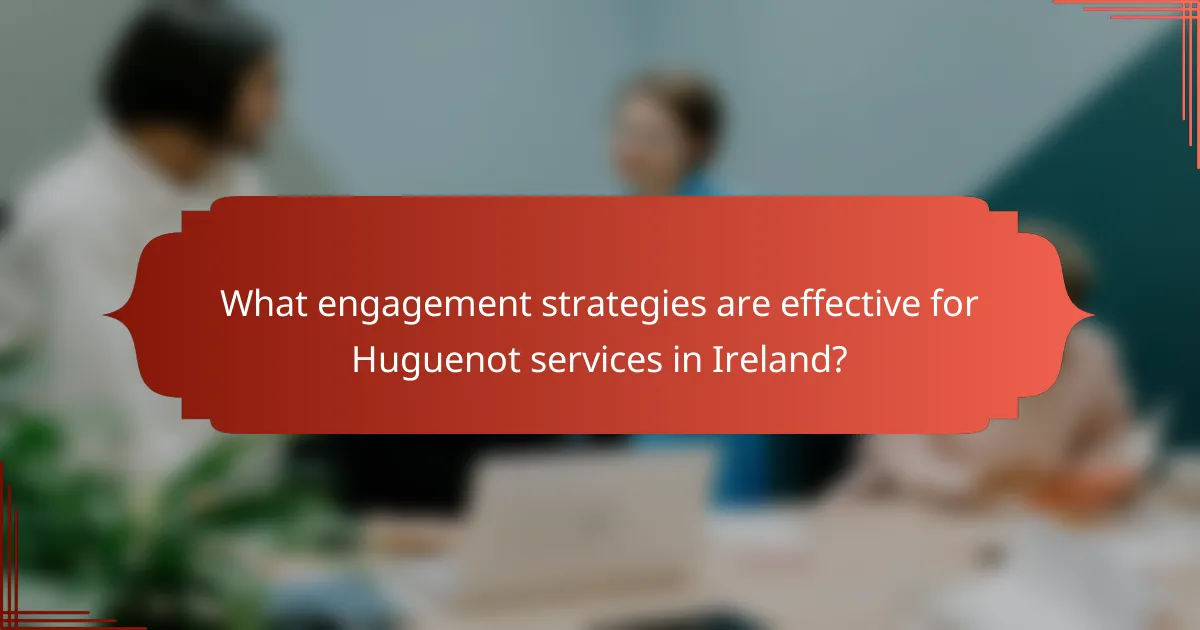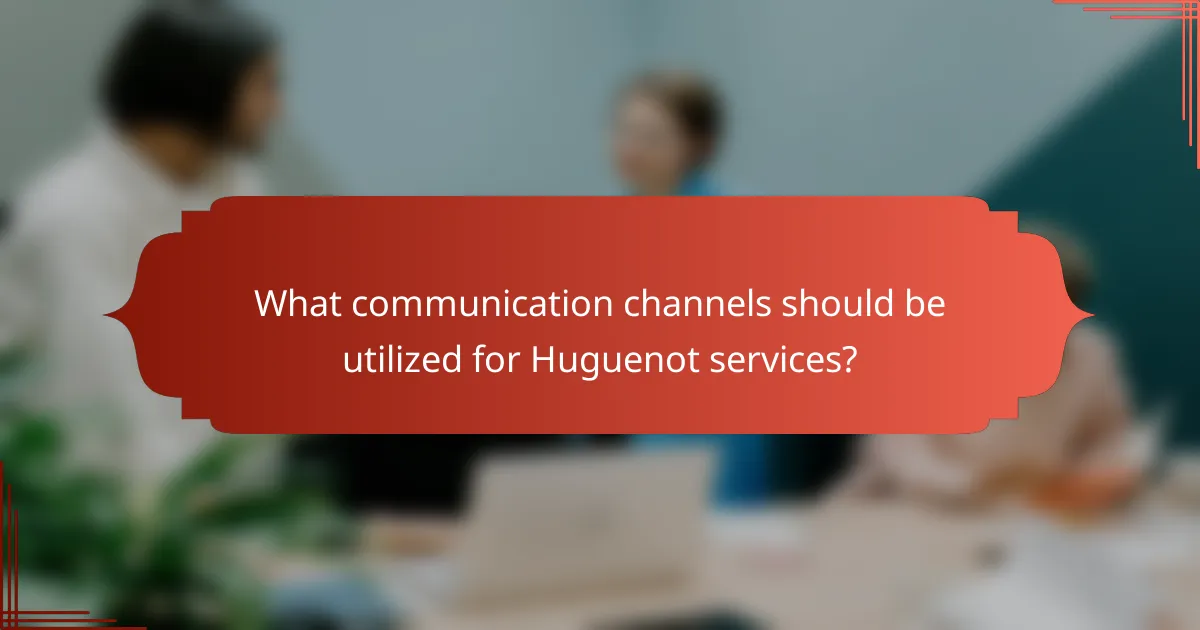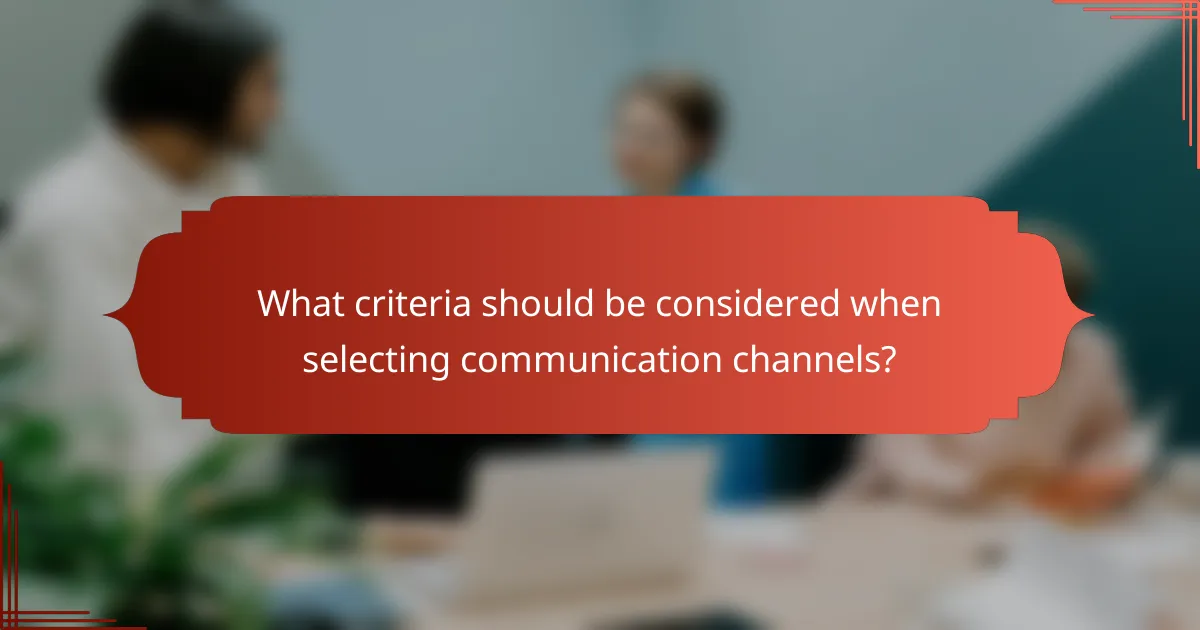Engaging the community effectively is crucial for Huguenot services in Ireland, utilizing strategies such as outreach, collaboration, and targeted social media campaigns to foster connections and participation. Communication channels like email newsletters, social media, and local radio play a vital role in enhancing visibility and interaction. Additionally, implementing feedback loops allows organizations to gather insights and continuously improve their services, ensuring they meet the evolving needs of the community.

What engagement strategies are effective for Huguenot services in Ireland?
Effective engagement strategies for Huguenot services in Ireland include community outreach, collaboration with local organizations, and targeted social media campaigns. These approaches foster connections, enhance visibility, and encourage participation within the community.
Community outreach programs
Community outreach programs are vital for engaging local populations with Huguenot services. These initiatives can include workshops, informational sessions, and cultural events that highlight Huguenot history and contributions. By actively participating in community events, organizations can build trust and rapport with residents.
Consider organizing events in local community centers or schools to maximize attendance. Offering free resources or materials can also attract interest and encourage participation.
Collaborative events with local organizations
Collaborative events with local organizations can significantly enhance the reach of Huguenot services. Partnering with cultural, educational, or religious groups allows for shared resources and a broader audience. Joint events, such as festivals or lectures, can create a more engaging experience for participants.
When planning these collaborations, ensure that the goals align with both organizations’ missions. This alignment fosters a sense of community and shared purpose, making the events more impactful.
Social media campaigns targeting local demographics
Social media campaigns are an effective way to reach specific demographics interested in Huguenot services. Utilizing platforms like Facebook, Instagram, and Twitter can help disseminate information quickly and engage with younger audiences. Tailoring content to reflect local interests and cultural nuances is crucial for success.
Consider using targeted ads to reach specific age groups or interests within the community. Regular updates and interactive content, such as polls or Q&A sessions, can also boost engagement and foster a sense of community online.

What communication channels should be utilized for Huguenot services?
Effective communication channels for Huguenot services include email newsletters, social media platforms, and local radio. Each channel serves a unique purpose and can enhance engagement with the community.
Email newsletters for updates
Email newsletters are a direct way to keep the community informed about Huguenot services. They can include updates on events, volunteer opportunities, and important announcements.
To maximize engagement, ensure that newsletters are visually appealing and concise. Aim for a frequency of bi-weekly or monthly to maintain interest without overwhelming recipients.
Consider segmenting your audience to tailor content to specific groups, such as families or youth, which can increase relevance and response rates.
Social media platforms like Facebook and Instagram
Social media platforms, particularly Facebook and Instagram, are essential for reaching a broader audience. These channels allow for real-time interaction and sharing of multimedia content, such as photos and videos from events.
Post regularly and engage with followers through comments and messages. Utilize features like stories and live videos to create a sense of immediacy and connection.
Target your posts based on demographics to ensure they reach the most relevant audience, enhancing community involvement and participation.
Local radio and community bulletin boards
Local radio stations and community bulletin boards are effective for reaching individuals who may not be active online. Radio announcements can inform listeners about upcoming events and services, while bulletin boards can display flyers and posters in high-traffic areas.
Collaborate with local radio hosts for interviews or segments that highlight Huguenot services. Ensure that bulletin board materials are visually engaging and include essential information like dates, times, and contact details.
Regularly update the content on bulletin boards to keep the information fresh and relevant, encouraging community members to check back often.

How can feedback loops enhance Huguenot services?
Feedback loops can significantly enhance Huguenot services by creating a continuous cycle of input and improvement. By actively seeking community insights and responding to them, organizations can better align their services with the needs and preferences of the community.
Surveys to gather community input
Surveys are an effective tool for collecting community input on Huguenot services. They can be distributed both online and in person, allowing for a broad range of responses. Aim for a mix of quantitative questions, such as rating services on a scale, and qualitative questions that invite detailed feedback.
Consider using platforms like Google Forms or SurveyMonkey to streamline the survey process. Offering incentives, such as small gift cards or community recognition, can also increase participation rates.
Regular community meetings for open dialogue
Regular community meetings foster open dialogue and provide a platform for discussing Huguenot services. These meetings can be held monthly or quarterly and should encourage participation from diverse community members. Create a welcoming environment where attendees feel comfortable sharing their thoughts.
During these meetings, focus on specific topics, such as service updates or upcoming initiatives. This targeted approach can lead to more productive discussions and actionable feedback.
Online feedback forms for service improvement
Online feedback forms are a convenient way for community members to share their thoughts on Huguenot services at any time. These forms should be easily accessible on the organization’s website and mobile-friendly to accommodate all users. Keep the forms concise to encourage completion.
Regularly review the submissions and categorize feedback to identify trends or recurring issues. This analysis can inform service adjustments and highlight areas needing immediate attention. Consider sharing updates on how community feedback has influenced changes to maintain transparency and encourage ongoing participation.

What are the best practices for implementing engagement strategies?
Effective engagement strategies focus on building meaningful connections with the Huguenot community through targeted outreach and communication. Best practices include setting clear objectives, measuring success with analytics, and adapting approaches based on feedback.
Setting clear objectives for outreach
Establishing clear objectives is crucial for any outreach initiative. Objectives should be specific, measurable, achievable, relevant, and time-bound (SMART). For example, aim to increase participation in community events by 20% within six months.
Consider the needs and interests of the Huguenot community when defining these objectives. Tailoring your goals to reflect community values can enhance engagement and foster a sense of belonging.
Measuring engagement success through analytics
Utilizing analytics is essential to gauge the effectiveness of your engagement strategies. Track metrics such as attendance at events, social media interactions, and feedback surveys to assess how well your outreach is resonating with the community.
Regularly review this data to identify trends and areas for improvement. For instance, if social media engagement is low, consider adjusting your content strategy or exploring new platforms to reach your audience more effectively.
Adapting strategies based on community feedback
Community feedback is invaluable for refining your engagement strategies. Actively solicit input through surveys, focus groups, or informal conversations to understand the community’s preferences and concerns.
Be prepared to adapt your strategies based on this feedback. For example, if community members express a desire for more family-oriented events, consider incorporating activities that cater to different age groups to enhance participation and satisfaction.

What criteria should be considered when selecting communication channels?
Selecting communication channels requires evaluating factors such as the target audience’s preferences, the cost-effectiveness of each channel, and the overall engagement strategy. Understanding these criteria helps ensure that messages reach the intended recipients effectively and efficiently.
Target audience preferences
Understanding the preferences of your target audience is crucial when selecting communication channels. Different demographics may favor various platforms; for example, younger audiences often engage more on social media, while older groups may prefer email or phone communication. Conducting surveys or analyzing existing data can provide insights into these preferences.
Additionally, consider the accessibility of channels for your audience. For instance, if your target group primarily uses mobile devices, prioritize mobile-friendly communication methods. Tailoring your approach based on audience preferences enhances engagement and response rates.
Cost-effectiveness of channels
Evaluating the cost-effectiveness of communication channels is essential for maximizing resources. Some channels, like email, may have low operational costs, while others, such as print advertising, can be significantly more expensive. Assessing the return on investment (ROI) for each channel can help determine the most financially viable options.
It’s also important to consider the potential reach and impact of each channel. A more expensive channel may yield better results if it effectively engages a larger audience. Create a budget that aligns with your goals and allows for flexibility in channel selection based on performance metrics.
